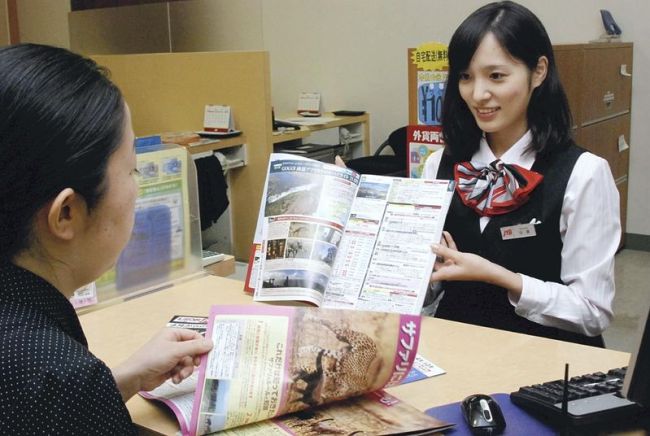Japan’s senior citizens play key role in overseas travel
By Korea HeraldPublished : March 4, 2014 - 19:51
In the past half century since Japanese were first permitted to travel abroad for sightseeing, the destinations have diversified, with senior citizens playing a major role in the travel boom.
Next month marks the 50th anniversary of the 1964 liberalization of overseas travel for tourism by Japanese.
With Japan’s rapid economic growth and the huge passenger capacity of jumbo jets, the number of people traveling abroad has surged. However, with the recent weakening of the yen and the planned consumption tax hike, it remains uncertain whether the number of Japanese traveling abroad will continue to grow.
In addition to the standard popular tourist destinations, such as Europe, Hawaii and the continental United States, trips to African and Latin American destinations ― places difficult to reach previously ― have become more popular in recent years.
Next month marks the 50th anniversary of the 1964 liberalization of overseas travel for tourism by Japanese.
With Japan’s rapid economic growth and the huge passenger capacity of jumbo jets, the number of people traveling abroad has surged. However, with the recent weakening of the yen and the planned consumption tax hike, it remains uncertain whether the number of Japanese traveling abroad will continue to grow.
In addition to the standard popular tourist destinations, such as Europe, Hawaii and the continental United States, trips to African and Latin American destinations ― places difficult to reach previously ― have become more popular in recent years.

Such travel agencies as Kintetsu International Co., JTB Corp. and ANA Sales Co. offer a variety of package tours that cover a gamut of destinations from the polar areas of the Arctic and Antarctic to the Amazon River basin.
According to Kintetsu International, its Latin American tours last year attracted 10 percent more customers than two years ago.
Senior citizens, who are more affluent and have ample leisure time, are traveling abroad in ever increasing numbers.
According to the Japan Association of Travel Agents, Japanese aged 60 or over account for 19.5 percent of those who traveled abroad in 2012, up from 17.4 percent in 2007.
In addition to those traveling alone and as couples, more people are traveling abroad with their children and grandchildren. The travel industry predicts an increase in the number of senior citizens traveling abroad.
However, the number of Japanese who traveled abroad in 2013 totaled 17,472,748, down 5.5 percent from 2012.
The prolonged depreciation of the yen since last year is believed to be partly responsible for this decrease.
Japanese may become more careful in spending money on travel after the April consumption tax hike.
To stimulate demand, the travel industry is striving to come up with tours that are more finely tuned to customers’ requests.
Up until 1964, passports were only issued for such purposes as business or studying abroad.
According to JATA, a seven-night, nine-day package tour to Hawaii cost 364,000 yen ($3,600) in the early days of liberalization. This was equivalent to 19 times the 19,100 yen starting monthly salary for a national civil servant with a college degree.
As a result, most overseas travelers at the time were wealthy, and savings accounts were used to build up funds needed for travel.
The number of overseas travelers grew rapidly from the 1970s on, spurred by rising income levels and the appreciation of the yen that followed the shift to a floating exchange rate system.
Travel was also boosted by the greater number of seats that resulted from the introduction of Boeing Co.’s wide-body 747 jumbo jets, which significantly reduced the cost of travel.
Only 120,000 Japanese people traveled abroad in 1964, but in 1972 the number reached 1.39 million. The number of Japanese traveling overseas topped 10 million in 1990, during the bubble economy.
In the 2000s, there have been dramatic rises and falls in overseas travel as incidents such as the September 2001 terrorist attacks on the United States, the beginning of the Iraq War in 2003 and the spread of a new variant of bird flu in 2009 made overseas travel seem risky.
In 2012, when the yen rose to record levels, the number of overseas travelers reached an all-time high of 18.49 million, or about 150 times the 1964 figure.
By Shuji Ogo
(The Japan News)
-
Articles by Korea Herald








![[Kim Seong-kon] Democracy and the future of South Korea](http://res.heraldm.com/phpwas/restmb_idxmake.php?idx=644&simg=/content/image/2024/04/16/20240416050802_0.jpg&u=)








![[KH Explains] Hyundai's full hybrid edge to pay off amid slow transition to pure EVs](http://res.heraldm.com/phpwas/restmb_idxmake.php?idx=652&simg=/content/image/2024/04/18/20240418050645_0.jpg&u=20240418181020)

![[Today’s K-pop] Zico drops snippet of collaboration with Jennie](http://res.heraldm.com/phpwas/restmb_idxmake.php?idx=642&simg=/content/image/2024/04/18/20240418050702_0.jpg&u=)